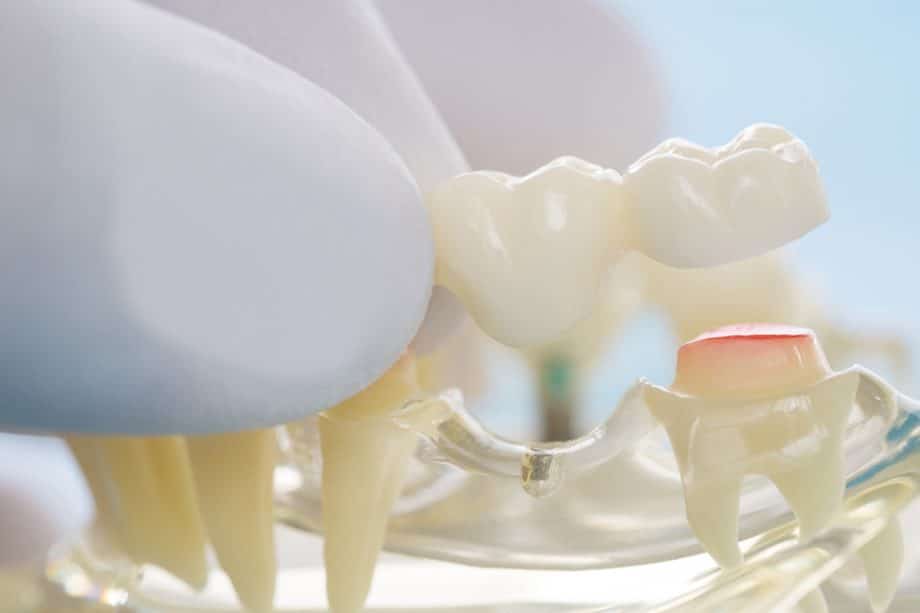A sparkling smile depends on keeping dental bridges clean and plaque-free. However, uncertainty about proper cleaning methods leaves many bridge owners with questions. How do you correctly brush and floss bridges? What tools work best? Without the right techniques, plaque and bacteria can threaten bridge longevity and oral health.
The Importance of Proper Cleaning and Flossing for Dental Bridges
Dental bridges naturally replace missing teeth by anchoring them to adjacent teeth or implants. This popular tooth replacement option looks and functions like natural teeth. However, bridges also require diligent care, just like your natural teeth.
Daily cleaning and flossing are critical to prevent plaque and bacteria from accumulating around and under bridges. Proper techniques remove trapped food debris that can cause problems. Insufficient cleaning risks oral health issues, including gum disease, bad breath, and even bridge failure.
Step 1: Gather the Necessary Tools for Cleaning and Flossing
- Use a toothbrush with gentle bristles to prevent any harm to your dental bridge or discomfort to your gums.
- Use fluoride toothpaste to ward off tooth decay.
- Employ floss threaders for effortless threading of floss beneath the bridge, ensuring thorough cleanliness.
- You can also consider interdental brushes or water flossers (if desired) to access challenging-to-reach areas.
Step 2: Brushing Techniques for Dental Bridges
- Wet toothbrush bristles and apply a pea-sized amount of toothpaste.
- Hold the brush at a 45-degree angle to the bridge and adjacent teeth.
- Gently brush using short, circular motions, covering all surfaces of the bridge.
- Pay extra attention where the bridge meets natural teeth or implants, as plaque frequently builds up in those areas.
- Thoroughly brush all surfaces for at least two minutes.
Step 3: Flossing Techniques for Dental Bridges
- Thread dental floss or a floss threader underneath the bridge.
- Gently move the floss up and down between the bridge and neighboring teeth, cleaning bridge sides as well.
- Avoid excessive pressure or force to prevent damage to the bridge or gums.
- Use a new section of floss for each space between bridge teeth.
If traditional floss is challenging, use floss threaders or interdental brushes. Their flexibility makes cleaning hard-to-reach areas easier.
Step 4: Using Interdental Brushes or Water Flossers for Additional Cleaning
Along with flossing, interdental brushes or water flossers boost dental bridge cleanliness. They effectively target hard-to-reach areas and stubborn debris. Here's how to properly use them:
Interdental brushes:
- Select a brush that fits the gaps between the bridge and neighboring teeth.
- Gently insert the brush and move back and forth to dislodge debris and plaque.
- Repeat for each space to ensure thorough cleaning.
Water flossers use a water stream to remove bacteria and debris from between teeth and bridges. Follow manufacturer instructions for effective use.
Step 5: Caring for Your Dental Bridge on a Daily Basis
In addition to cleaning and flossing, a few daily habits can help care for your dental bridge:
- Avoid hard, sticky foods that could damage or dislodge the bridge. Opt for softer, easier-to-chew options.
- Limit sugary foods and drinks that contribute to decay and plaque, affecting natural teeth and bridges.
- Clean thoroughly at night to remove accumulated plaque and debris before bed.
- Visit your dentist regularly for check-ups, professional cleanings, and to address any concerns.
These simple practices promote bridge longevity and optimal oral health:
- Softer foods prevent bridge damage.
- Reduced sugar limits plaque buildup.
- Nightly cleaning removes daily debris.
- Regular dentist visits maintain bridge health.
Common Mistakes to Avoid When Cleaning and Flossing Dental Bridges
- Using excessive force - Can damage the bridge or irritate gums. Be gentle yet thorough when cleaning.
- Neglecting to clean between the bridge and neighboring teeth - Plaque buildup and gum disease can occur. This area needs regular cleaning.
- Using the wrong tools - Hard-bristled brushes or improper floss can damage bridges. Use soft bristles and floss threaders designed for bridges.
- Skipping regular dental check-ups - Oral health maintenance and bridge issue detection require regular appointments. Skipping can lead to unnoticed problems.
Frequently Asked Questions
How often should I clean my dental bridge?
You should clean your dental bridge thoroughly at least twice a day, just as you would your natural teeth. Brush and floss after every meal to prevent plaque buildup and maintain good oral hygiene.
How can I clean hard-to-reach areas?
Interdental brushes and water flossers are useful supplemental tools for cleaning between bridge teeth and under the connectors. Take care not to scrape or damage your bridge with these tools.
Dental Bridges in Aliso Viejo
Proper cleaning and flossing techniques are integral for maintaining the health and longevity of dental bridges.
By dedicating a little time each day to carefully clean and floss your dental bridge, you can prevent plaque buildup, tooth decay, and gum disease. Your bridge will remain securely in place, and you'll continue to enjoy the aesthetics and functionality it provides.
To learn more or to schedule an appointment, contact us at 949-916-7800.

